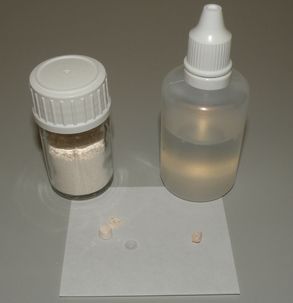MATERIAL
Zinc Oxide–Eugenol Cement (TempBond): Powder and Liquids
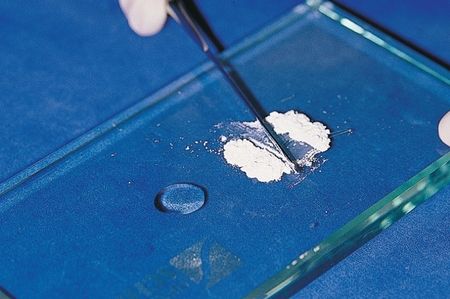
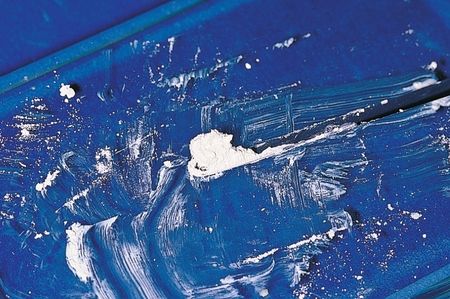
From Hatrick, Eakle, and Bird, 2011.
MATERIAL
Zinc Phosphate Cement
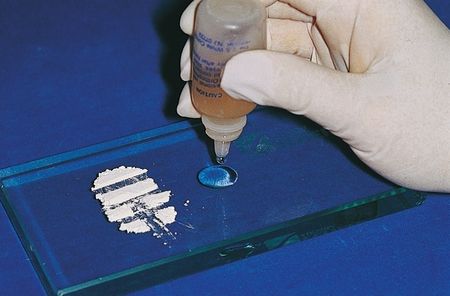
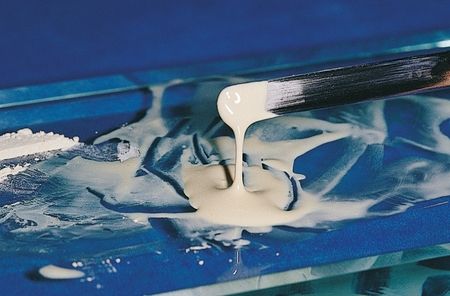
From Hatrick, Eakle, and Bird, 2011.
Directions
6. Force second increment of powder into liquid and slowly mix for 10 to 15 seconds. Continue to add powder to the mixture in small increments until proper consistency has been reached.
If the material is being used for a base, the consistency will allow for the material to be rolled into a ball. If too little powder is used, the mixture is sticky or tacky. Before placing the base, the ball should be rolled in cement powder to prevent the material from sticking to instruments during placement. A proper base mix does not stick to instruments if the ball of material and instruments are covered with cement powder.
Stay updated, free dental videos. Join our Telegram channel

VIDEdental - Online dental courses


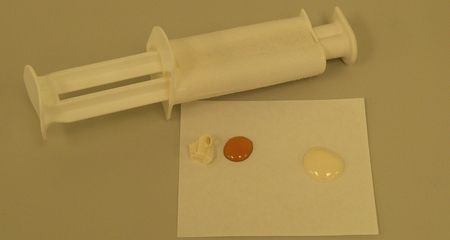
 Special Notes/Helpful Hints • Most paste systems are used as temporary cements because of their lack of strength and solubility. • Powder and liquid systems are reinforced and can be used for temporary restorations and intermediate bases. • When using the material as a base, the consistency is similar to pie dough. If too little powder is used, the mixture becomes sticky or tacky. A proper base mix does not stick to instruments, allowing for the material to be condensed into a tooth preparation.
Special Notes/Helpful Hints • Most paste systems are used as temporary cements because of their lack of strength and solubility. • Powder and liquid systems are reinforced and can be used for temporary restorations and intermediate bases. • When using the material as a base, the consistency is similar to pie dough. If too little powder is used, the mixture becomes sticky or tacky. A proper base mix does not stick to instruments, allowing for the material to be condensed into a tooth preparation. Special Notes/Helpful Hints • Most paste systems are used as temporary cements because of their lack of strength and solubility. • Powder and liquid systems are reinforced and can be used for temporary restorations and intermediate bases. • When using the material as a base, the consistency is similar to pie dough. If too little powder is used, the mixture becomes sticky or tacky. A proper base mix does not stick to instruments, allowing for the material to be condensed into a tooth preparation.
Special Notes/Helpful Hints • Most paste systems are used as temporary cements because of their lack of strength and solubility. • Powder and liquid systems are reinforced and can be used for temporary restorations and intermediate bases. • When using the material as a base, the consistency is similar to pie dough. If too little powder is used, the mixture becomes sticky or tacky. A proper base mix does not stick to instruments, allowing for the material to be condensed into a tooth preparation. Special Notes/Helpful Hints • A chilled glass slab is essential with use of this material because of the exothermic reaction that occurs during mixing. If the material is mixed over a larger surface area of the chilled glass slab, the slab absorbs the heat from the exothermic reaction. • The material has a low pH until it has set, which causes the material to be irritating to the pulp. Because of the low pH, a varnish is often placed when this material is intended to be used as a base.
Special Notes/Helpful Hints • A chilled glass slab is essential with use of this material because of the exothermic reaction that occurs during mixing. If the material is mixed over a larger surface area of the chilled glass slab, the slab absorbs the heat from the exothermic reaction. • The material has a low pH until it has set, which causes the material to be irritating to the pulp. Because of the low pH, a varnish is often placed when this material is intended to be used as a base.